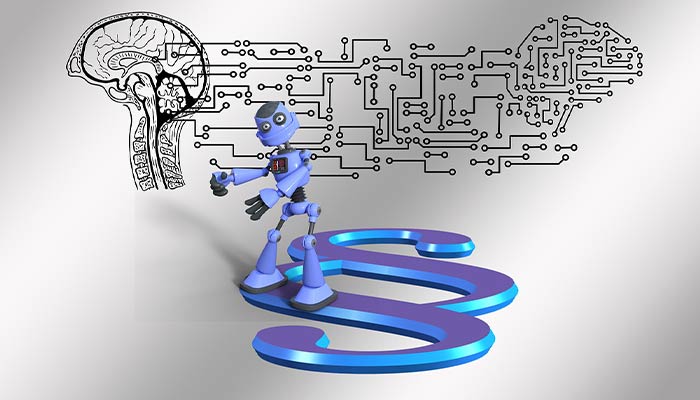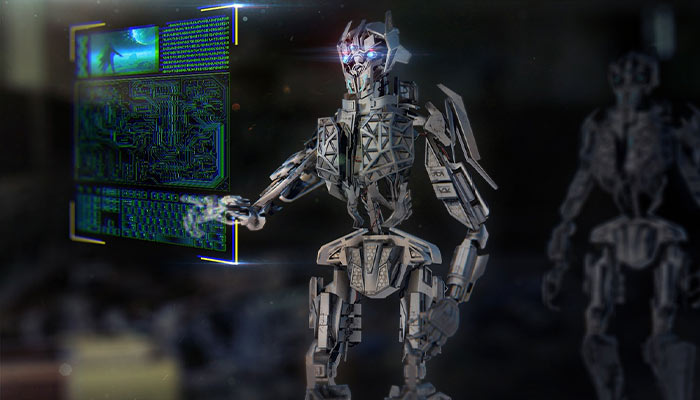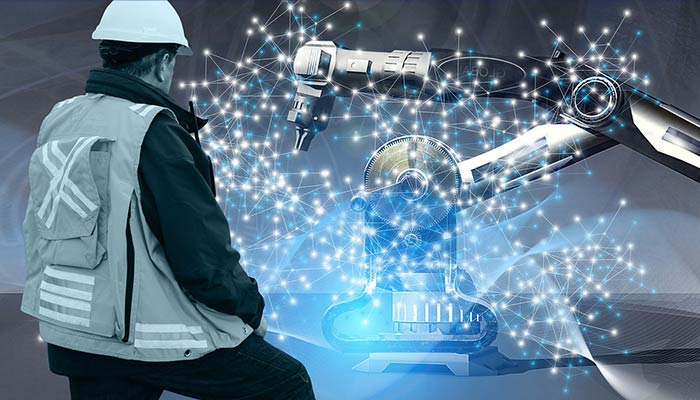Future factories will be intuitive, intelligent, and full of sensors owing to AI in Manufacturing. Find out why it will be important for factories in the future. Robots and individuals may work together to complete tasks thanks to artificial intelligence (AI), which doesn’t replace people in the industrial sector.
As machines get smarter, they will be able to do more and more tasks that are the same over and over again. This will free up their human counterparts to work on other problems for longer. As AI systems are used in manufacturing, speed, accuracy, and quality control will improve.
The idea of a factory that runs itself has always been thought-provoking and used extensively in science fiction and fantasy. It’s a place with almost no people working there. Robotic production lines are run by systems with artificial intelligence (AI). But this isn’t likely to be how AI is used in manufacturing within a reasonable time frame for planning.
Realistically, AI in manufacturing looks more like a group of programs for small, separate systems that run specific manufacturing processes. They will work more or less on their own and react to outside events in increasingly smart and human-like ways. These events could be anything from a tool breaking to a fire or natural disaster.
What Does Artificial Intelligence Mean in Manufacturing or Uses of Ai in manufacturing

Artificial intelligence (AI) in manufacturing refers to a machine’s ability to think like a person, react independently to internal and external events, and anticipate future occurrences. The machines can tell when a tool is worn out, or something unexpected (or maybe even something that was supposed to happen), and they can act to fix the problem or get around it.
Historians study how people have changed from the Stone Age to the Bronze Age, the Iron Age, etc. They look at how well people have learned to control their natural surroundings, materials, tools, and technologies. People live in the Information Age, also called the Silicon Age. In this age of computers and electronics, people have more power over nature than ever. They can work together to do things that would have been impossible just a few generations ago.
The first digital electronic programmable computer, the Electronic Numerical Integrator and Computer (ENIAC) was shown in this photograph at the Ballistic Research Laboratory in Philadelphia between 1947 and 1955.
AI is a natural result of computers getting better at doing things people have always done for themselves. AI and machine learning can be used in many different ways. AI is good at helping creative people do more. It doesn’t have to replace people; the best applications help people do what they do best. In manufacturing, that could be making a part in the factory or designing a product or part.
More and more, it’s about how humans and robots can work together. Even though most people think of industrial robots as self-sufficient and “smart,” most need a lot of supervision. But AI innovations are making them smarter, which makes it safer and easier for people and robots to work together.
How has AI changed the way things are made?

Most AI in manufacturing today is used for measuring, nondestructive testing (NDT), and other tasks. AI is helping to design products, but it’s still early days for AI to be used in making things. Machine tools are still not very smart. The news is full of stories about automated shop tools, but many factories worldwide still use older tools, which often only have a mechanical or limited digital interface.
Using a computer or the system, users of more recent fabrication equipment may see what they’re doing on a screen. Sensors can tell you many things, like how much material is used and how much power is used.
Related
How Artificial Intelligence Will Impact Business In The Future, Business Intelligence’s Future Is With Artificial Intelligence.
Newer systems for making things have screens, human-computer interfaces, and electronic sensors that give feedback on the supply of raw materials, the system’s status, the amount of power used, and many other things. People can see their actions on a computer screen or on the machine itself. The next steps are becoming clear, as are the different ways AI can be used in manufacturing.
Shortly, you might be able to watch the machining process in real time and keep an eye on status inputs like tool wear. “Predictive maintenance” is the name for these kinds of uses. It seems like an obvious chance for AI: Algorithms that take in continuous streams of data from sensors find meaningful patterns and use analytics to predict problems and alert maintenance teams so they can fix them before they happen.
There are sensors inside the machine that can tell if something is going on. It may be an auditory sensor that listens for signs that the belts or gears are beginning to wear out, or it can be a sensor that keeps track of how the tool is wearing out. This information would be linked to an analytical model that could determine how long that tool has left.
The addition of numerous new kinds of sensors to the system to monitor changing circumstances impacting materials and fabrication technology, which has recently been extensively used, has been motivated by the increasing importance of additive manufacturing on the shop floor.
How AI is used in manufacturing now

By using a “digital twin,” AI is making it possible to design manufacturing processes with a lot more accuracy and to find and fix problems when they arise during the making process. A digital twin is a virtual copy of the physical part, the machine tool, or the part being made. It’s not just a CAD model. It’s a digital copy of the part and how it will act if something goes wrong. (All parts are flawed, which is why they break.) AI is needed for a digital twin to be used in designing and maintaining a manufacturing process.
Large businesses have much to gain from AI and the money to pay for these new ideas. But some of the most creative applications have been funded by small and medium-sized businesses (SMEs), like contract designers or manufacturers who supply industries like aerospace that use a lot of technology.
Many small and medium-sized businesses (SMEs) try to get ahead of their competitors by adopting new machines, equipment, or technology. Offering these services makes them stand out in the fabrication space, but sometimes they use new tools and methods without the knowledge or experience. This is true from both a design and a manufacturing point of view. Because of this, it’s hard to get into additive manufacturing. In this case, small and medium-sized businesses (SMEs) could have more reason to use AI than large businesses: A small start-up could gain a disruptive foothold in the market by using smart systems that can give feedback and help with setup and operation.
